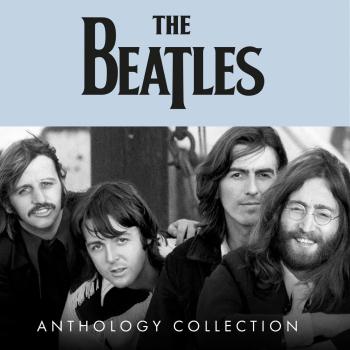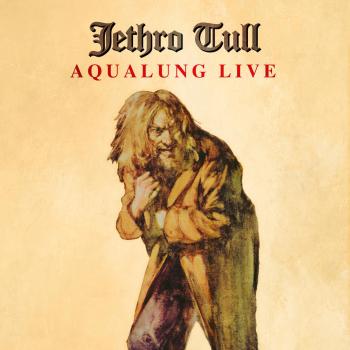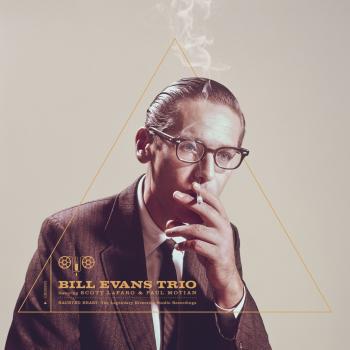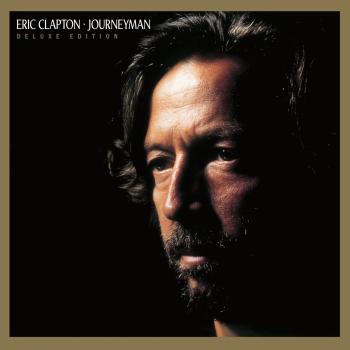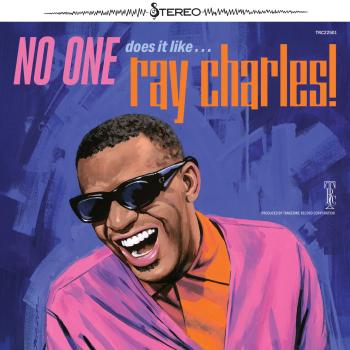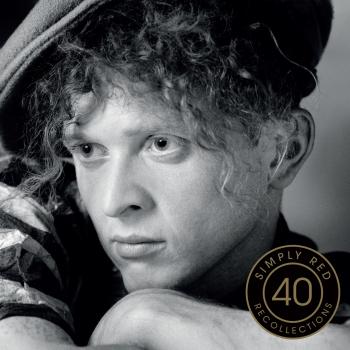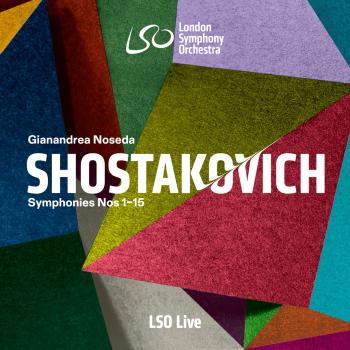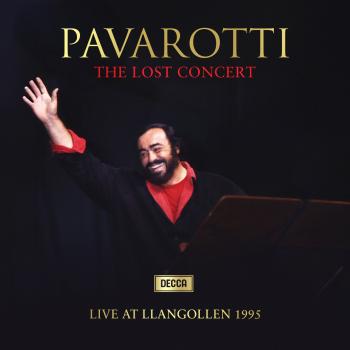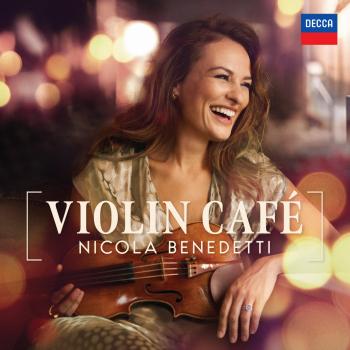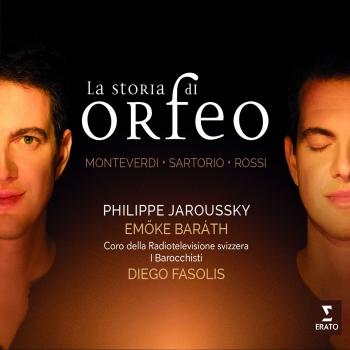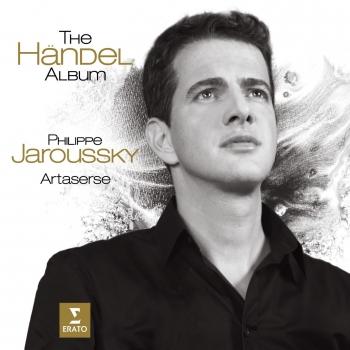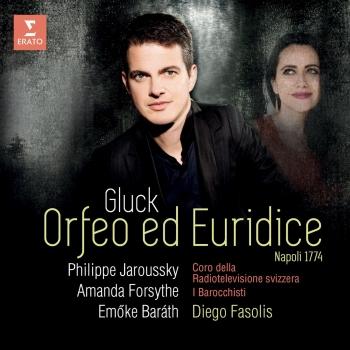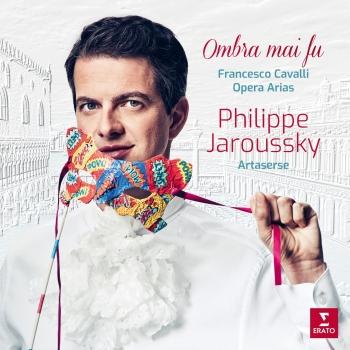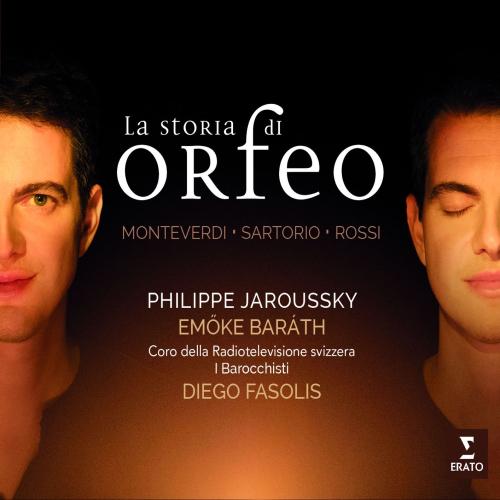
La storia di Orfeo Philippe Jaroussky
Album info
Album-Release:
2017
HRA-Release:
03.03.2017
Label: Erato/Warner Classics, Warner Classics UK Ltd
Genre: Classical
Subgenre: Vocal
Artist: Philippe Jaroussky
Composer: Antonio Sartorio (1630-1681), Salomone Rossi (1570-1639), Claudio Monteverdi (1567-1643)
Album including Album cover Booklet (PDF)
I`m sorry!
Dear HIGHRESAUDIO Visitor,
due to territorial constraints and also different releases dates in each country you currently can`t purchase this album. We are updating our release dates twice a week. So, please feel free to check from time-to-time, if the album is available for your country.
We suggest, that you bookmark the album and use our Short List function.
Thank you for your understanding and patience.
Yours sincerely, HIGHRESAUDIO
- Antonio Sartorio (1630-1680): L'Orfeo, SV 318:
- 1 Sinfonia 01:31
- 2 Act 1: "Cara e amabile catena" (Euridice, Orfeo) 02:17
- 3 Act 1: "Vieni, Imeneo... Lasciate i monti" (Chorus) 02:29
- Claudio Monteverdi (1567-1643): L'Orfeo, SV 318, Act 1:
- 4 "Rosa del Ciel" (Euridice, Orfeo) 02:51
- 5 "Mio ben, teco il tormento" (Euridice) 04:00
- Luigi Rossi (1597-1653): L'Orfeo, Act 1:
- 6 "Che dolcezza è la certezza" (Euridice, Orfeo) 00:43
- 7 "Deh, più lucente" (Chorus) 01:12
- Claudio Monteverdi: L'Orfeo, SV 318, Act 2:
- 8 "Vi ricorda, o boschi ombrosi" (Orfeo) 01:58
- 9 "Vieni, Imeneo" (Chorus) 00:50
- Luigi Rossi: L'Orfeo, Act 1:
- 10 "M'ami tu?... Se così dunque Amor fà... Deh, pietà!" (Euridice, Orfeo, Chorus) 04:13
- Act 2:
- 11 "A l'imperio d'Amore" (Chorus, Euridice) 01:18
- Antonio Sartorio: L'Orfeo, Act 2:
- 12 "Ahimè, Numi, son morta" (Euridice, Orfeo) 02:01
- Luigi Rossi: L'Orfeo, Act 2:
- 13 "Ah, piangete!" (Chorus) 01:02
- Act 3:
- 14 "Lagrime, dove sete?" (Orfeo) 03:42
- Antonio Sartorio: L'Orfeo, Act 3:
- 15 "È morta Euridice" (Orfeo) 02:50
- Luigi Rossi: L'Orfeo, Act 3:
- 16 "Dormite, begl'occhi, dormite" (Chorus) 02:23
- Antonio Sartorio: L'Orfeo, Act 3:
- 17 "Orfeo tu dormi?" (Euridice) 02:14
- 18 "Se desti pietà" (Euridice) 01:56
- 19 "Risvegliati, sù" (Euridice, Orfeo) - Monteverdi: Sinfonia (Orchestra) 02:17
- Claudio Monteverdi: L'Orfeo, SV 318, Act 2:
- 20 "Possente spirto" (Orfeo) 08:42
- Act 4:
- 21 "Pietade oggi e Amore" (Chorus) 01:09
- Antonio Sartorio: L'Orfeo, Act 3:
- 22 "Numi, che veggio... Non ti volger " (Euridice, Orfeo) 03:17
- 23 "Chiuso, ahimè, di Cocito... Rendetemi Euridice" (Orfeo) 01:52
- Luigi Rossi: L'Orfeo, Act 3:
- 24 "Lasciate Averno" (Orfeo) 06:09
- 25 "Amor vero e salda fé" (Chorus) 01:00
Info for La storia di Orfeo
With Philippe Jaroussky’s new album, Storia di Orfeo, the French countertenor realises a long-held dream: to portray the mythic Orpheus – divine musician who ventures into the underworld to retrieve his beloved wife Eurydice from the clutches of death – in his many guises, an inspiration for the very first opera and beyond.
“This project, which was inspired by three key 17th-century operas, was conceived as a kind of opera in miniature or as a cantata for two solo voices and chorus, and features just two characters: Orpheus and Eurydice,” explains Jaroussky. “The three operas focus on different aspects of the story: Sartorio and Rossi depict the happiness of the young lovers and the scene in which Eurydice is bitten by the snake; Monteverdi, on the other hand, concentrates more on Orpheus’ search for Eurydice in the underworld, and the highpoint of his work is an aria that has remained without parallel in the history of opera: the magical ‘Possente spirto’, which I have the temerity to perform here as a countertenor, for the first time on record.”
He is joined by sublime soprano Emőke Baráth and period-instrument ensemble par excellence I Barocchisti with Diego Fasolis at the helm. A journey to the beginnings of opera, to the Italian Baroque, to the underworld and back.
Philippe Jaroussky, countertenor
Emőke Baráth, soprano
I Barocchisti
Coro della Radiotelevisione svizzera
Diego Fasolis, conductor
Philippe Jaroussky
born in 1978 has established himself as the most admired countertenor of his generation, as confirmed by the French 'Victoires de la Musique' awards (‘Revelation Artiste Lyrique’ in 2004, ‘Artiste lyrique de l'année’ in 2007 and in 2010, CD of the Year 2009 ) and the Echo Klassik Awards in Germany in 2008.
Jaroussky's technique allows him the most audacious nuances and impressive pyrotechnics. He has explored a vast Baroque repertoire, from the refinement of the Italian Seicento with Monteverdi, Sances and Rossi, to the staggering brilliance of Handel and Vivaldi arias (singing more music by the latter composer than any other over the last few years). He has worked with renowned period-instrument orchestras such as L'Arpeggiata, Les Arts florissants, Ensemble Matheus, Les Musiciens du Louvre, Le Concert d'Astrée, Le Cercle de l'Harmonie and Europa Galante with conductors including Christina Pluhar, William Christie, Jean-Christophe Spinosi, Marc Minkowski, René Jacobs, Jérémie Rhorer, Emmanuelle Haïm, Jean-Claude Malgoire and Fabio Biondi. With pianist Jerôme Ducros, he has looked beyond the Baroque – to fin-de-siècle French song (the album Opium), as well as premiering contemporary vocal music composed for him by Marc-André Dalbavie (Sonnets de Louise Labé, which Jaroussky sang most recently at the 2014 Salzburg Festival).
He has been praised for performances in all the most prestigious concert halls in France (Théâtre des Champs-Elysées, Théâtre du Châtelet, Salle Pleyel, Salle Gaveau, Opéra de Lyon, Opéra de Montpellier, Opéra de Nancy, Arsenal de Metz, Théâtre de Caen) and abroad (The Barbican Centre and Southbank Cente in London, the Palais des Beaux Arts in Brussels, Grand Théâtre du Luxembourg, the Konzerthaus in Vienna, the Staatsoper and Philharmonie in Berlin, Teatro Real in Madrid, Carnegie Hall and the Lincoln Center in New York).
Philippe Jaroussky is signed exclusively to Erato and has received numerous awards for his recordings with the label. With Heroes (Vivaldi opera arias) and La Dolce Fiamma he achieved Gold disc status; his tribute to Carestini (with le Concert d'Astrée and Emmanuelle Haim) won CD of the year at the Victoires de la Musique and the Midem Classical Awards in 2009; his Stabat Mater with soprano Julia Lezhneva and I Barocchisti picked up the 2014 International Classical Music Awards for best Baroque Vocal Album and Best Opera Album. Of the 2013 release Farinelli: Porpora Arias, Gramophone wrote: “Jaroussky's rapid passagework in quick heroic arias is precise...but the outstanding moments are slow arias that could have been tailor-made for Jaroussky's sweetly graceful melodic singing”.
In recent years he has collaborated with singers including Cecilia Bartoli and Nathalie Stutzmann. With Ensemble Artaserse, which he founded in 2002, he gave the spectacular modern revival of Vinci’s opera Artaserse, as one of five exceptional countertenors in the cast.
Booklet for La storia di Orfeo

